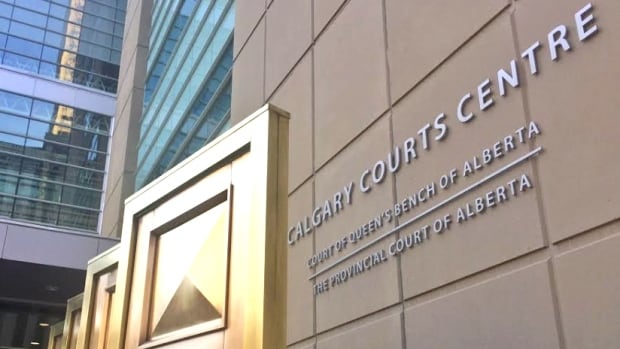An Alberta judge is recommending changes to how peace officers deal with mentally unstable people after the death of an officer in 2012.
Judge Bruce Fraser oversaw a fatality inquiry into the death of Rod Lazenby, 62, a peace officer for the Municipal District of Foothills who was attacked while responding to a call about dogs on a rural property south of Calgary.
An autopsy found Lazenby was strangled and had 56 cuts and bruises to his face, head, neck, body and back. He also suffered numerous internal injuries.
Trevor Kloschinsky told officers he had apprehended a dog thief. He was charged with first-degree murder but was found not criminally responsible because a mental disorder meant he didn't understand that what he was doing was wrong.

Rod Lazenby, left, an Alberta peace officer, was killed on the job in 2012. He was working for the Municipal District of Foothills when he was sent to the home of Trevor Kloschinsky, near Priddis, to investigate an animal complaint. (CBC)
"It would appear [Lazenby] was unaware Kloschinsky was lying in wait for him and was prepared to attack him," Fraser wrote in his report released Wednesday.
"It is unknown if he was aware that Kloschinsky was mentally unstable but having dealt with him previously he should have been.
"Undoubtedly he thought he could handle him alone. He was wrong and paid with his life."
Fraser said more caution is needed when peace officers deal with unpredictable individuals.
"No [peace officer] should attend for enforcement a place where there is a known threat from a specific person or a known mentally unstable person or a known person prone to violence on his own as Officer Lazenby did," Fraser said.
Fraser recommends all municipalities require peace officers to inform dispatchers of their whereabouts and the purpose of their visit. He said there should also be a list of "flagged places" that could present a risk.
He said all officers should receive weapons and officer safety training. They should also be allowed to wear body armour and carry weapons, including batons, pepper spray and handcuffs, he said.
Lazenby's only weapon was a baton since he wasn't designated a Level 1 officer who could carry more protection.
"Any officer dealing with public enforcement, in my view, should be properly trained for officer safety and weapons training as well as defensive tactics," Fraser wrote.
"Officer Lazenby should have had that training and been allowed to carry weapons as did Level 1 officers. They both deal with an unknown public."
Darlene Roblin, the protective services co-ordinator at the M.D., says there is a need to stop ignoring the inherent risk that these officers face every day.
"Not having those things absolutely can make a situation worse and make it more unsafe for the officers," she said. "So I think that if these things become mandatory by policy of the Solicitor General's peace officer program, I think that will do nothing but enhance safety for peace officers across the province."
A fatality inquiry may recommend how to prevent similar deaths but cannot make any findings of legal responsibility.
Alberta's Ministry of Justice and Solicitor General has received the report and is reviewing the recommendations.
"We thank all those who provided their input and insight to the inquiry, and we are determining how best to move forward in relation to these recommendations," said ministry spokesperson Brendan Cox in a statement.
The Alberta Association of Community Peace Officers did not respond immediately to a request for comment.
- MORE ALBERTA NEWS | Alberta's budget: 5 things the business sector is seeking
- MORE ALBERTA NEWS | Edmonton woman not criminally responsible for stealing ambulance, judge rules


















